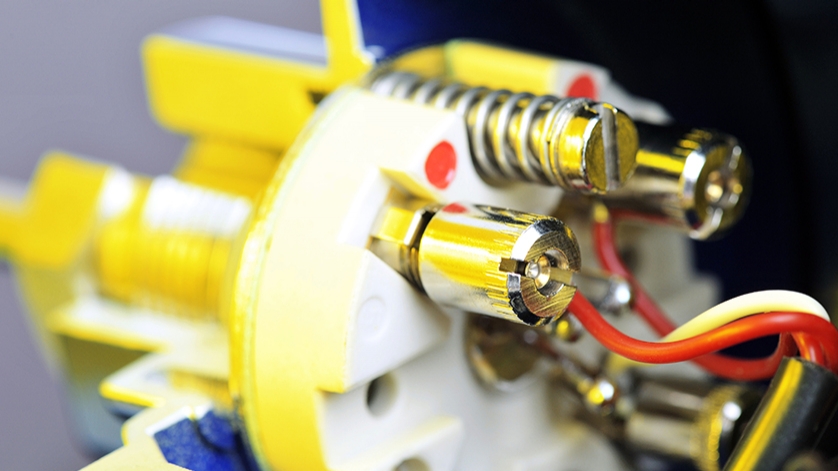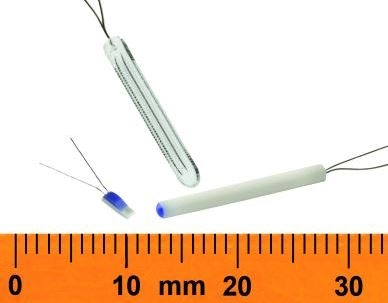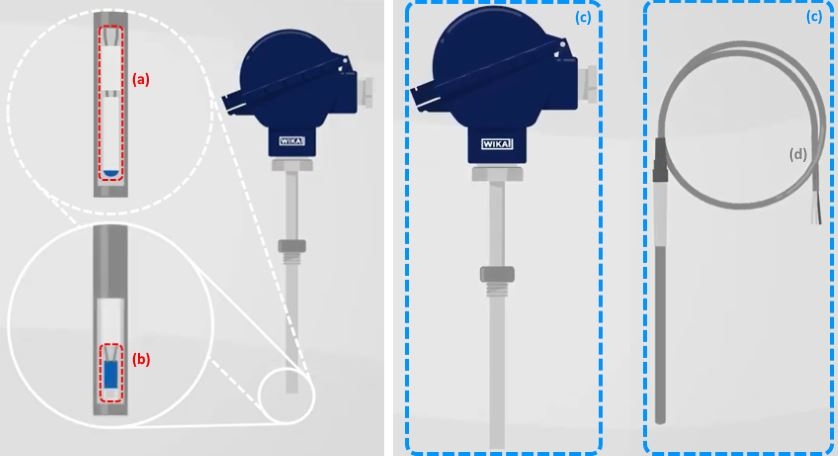
Perhaps you’ve already noticed that in some instances a Pt100 is specified with an accuracy class B or A. At other times, it has the class F 0.3 or F 0.15. This blog post looks at the specifications for Pt100 in the international IEC 60751 standard and explains the difference in accuracy classes.
Characteristics of a Pt100
The corrosion-resistant, precious metal ‘platinum’ has a high long-term stability. In addition, a Pt100 features a high reproducibility and a low non-linearity. Other very useful properties are a very good thermal shock resistance and high measurement accuracy. Last but not least, the wide temperature range that can be realised with a Pt100 makes it the most frequently used measuring element in industrial temperature measurement.
Meaning of the international IEC 60751 standard
For industry, standards are very important. They ensure that products possess a constant, traceable quality. If a product is manufactured in accordance with international standards, all market participants can be confident that the characteristics described within it are met. Thus, a Pt100 in accordance with IEC 60751 always has the same base resistance values and also a defined tolerance curve. This allows the user, for example, to replace a defective thermometer with a new one, without having to readjust the control loop. Likewise, one controller can easily be exchanged for another, provided the latter has a Pt100 input.
Differentiation between measuring resistor and thermometer

Fig. left: Pt100 in thin-film design
Fig. centre: Pt100, wire-wound, glass measuring resistor
Fig. right: Pt100, wire-wound, ceramic measuring resistor
With the revision of IEC 60751 in 2008, new accuracy classes and measuring ranges for Pt100s were introduced. Thus the standard differentiated between measuring resistors and resistance thermometers for the first time. A measuring resistor consists of a platinum wire (wire-wound measuring resistor) or a platinum film (film measuring resistor) and is designed for installation in resistance thermometers. A resistance thermometer (c), on the other hand, by definition consists of:
- the same measuring resistor (a or b), installed in protective components
- internal connecting wires and external terminals for connection to electrical measuring instruments
- Mounting elements, connecting cables (d) or connection heads, depending on thermometer version.

Comparison: Measuring resistor (a = wire-wound, b = film resistor) and resistance thermometer (c)
Development history for the IEC 60751 standard
IEC 60751 originally only recognised classes A and B for Pt100s. It did not differentiate between measuring resistors and thermometers. There was also no differentiation in the measuring resistances between wire-wound and film measuring resistances. Triggered by complaints from their customers, the thermometer manufacturers (independently of each other) measured the accuracy of their own and third-party instruments. The result: Thermometers with film measuring resistors show a different behaviour at higher temperatures than described in the standard. The standards committee took this into account in the revision of IEC 60751. The accuracy classes A and B for resistance thermometers were retained. Classes AA and C were added. The addition responded to customer demand for more accurate thermometers (class AA) and takes into account the greater inaccuracy of film measuring resistors at temperatures above 500 °C (class C).
Bases and results of the revision of the IEC 60751 standard
For the measuring resistors themselves, the standards committee has consequently introduced new classes. Tests have shown that a measuring resistor behaves differently under laboratory conditions than a measuring resistor installed in a thermometer. This behaviour affects the range of validity and the tolerance value. Thus it can happen that a measuring resistor originally has class A – the thermometer in which it is installed, however, has a different validity range. Also the tolerance value can thus be altered. In order to do justice to this fact, a separate table for measuring resistances was created. The differences in the temperature ranges between a wire-wound Pt100 and a Pt100 in thin-film design (film measuring resistor) are taken into account. Wire-wound Pt100’s can be found in classes W 0.1 / W 0.15 / W 0.3 / W 0.6 (W for “wire wound”). Film measuring resistors correspond to the classes F 0.1 … F 0.6 (F for “thin film”).
| Measuring resistors | ||||
|---|---|---|---|---|
| Wire-wound measuring resistors | Film measuring resistors | Tolerance value [°C] |
||
| Class | Range of validity [°C] |
Class | Range of validity [°C] |
|
| W 0.1 | -100 … + 350 | F 0.1 | 0 … +150 | +/- (0.1 + 0,0017 * t) |
| W 0.15 | -100 … +450 | F 0.15 | -30 … +300 | +/- (0.15 + 0,002 * t) |
| W 0.3 | -196 … +660 | F 0.3 | -50 … +500 | +/- (0.3 + 0,005 * t) |
| W 0.6 | -196 … +660 | F 0.6 | -50 … +600 | +/- (0.6 + 0,01 * t) |
Table 1: Accuracy classes and temperature ranges for Pt100 – Measuring resistors in accordance with IEC 60751
| Thermometers | ||||
|---|---|---|---|---|
| Wire-wound measuring resistors | Film measuring resistors | Tolerance value [°C] |
||
| Class | Range of validity [°C] |
Class | Range of validity [°C] |
|
| AA | -50 … +250 | AA | 0 … +150 | +/- (0.1 + 0,0017 * t) |
| A | -100 … +450 | A | -30 … +300 | +/- (0.15 + 0,002 * t) |
| B | -196 … +600 | B | -50 … +500 | +/- (0.3 + 0,005 * t) |
| C | -196 … +600 | C | -50 … +600 | +/- (0.6 + 0,01 * t) |
Table 2: Accuracy classes and temperature ranges for Pt100 thermometers in accordance with IEC 60751
Differences between wire-wound and film measuring resistors
Other than the temperature ranges, there are further differences in the two Pt100 versions. The most important is the design. A wire-wound measuring resistor is considerably larger than a Pt100 in thin-film design. Very short insertion lengths, which are often necessary in machine building, can only be achieved practically with a film measuring resistor. The lower mass of the film measuring resistor leads to a shorter response time of the thermometer. Also, the vibration resistance is therefore better than with a thermometer with a wire-wound Pt100.
Meaning of the measuring resistor type
The thermometer marking in accordance with IEC 60751 does not specify the type of measuring resistor. This is usually of no concern to the user as long as the specifications required for the application are met. However, due to the different advantages of the two types, it may be helpful in individual cases to know the type installed. Thus, for example, a thermometer with a film measuring resistor can be fitted even where it is only immersed a few millimetres into the medium. Whereas, with a wire-wound resistor – simply because of its length – a measuring error can occur because the measuring element may not be able to be fully immersed in the medium.
EExchange of experience
Film measuring resistors are the standard design in WIKA thermometers, unless the temperature range or an explicit customer request exclude them. What are your experiences with resistance thermometers? Which tolerance specification do you prefer and why? You are welcome to use the comment function or write to me.
Note
You can get further information on resistance thermometers on the WIKA website or in the video: How does a resistance thermometer work? In our Technical Information “Operating limits and tolerances of platinum resistance thermometers per EN 60751” you will find further information on the differences between wire-wound and film measuring resistors.
Also read our articles
Pt100 in 2-, 3- or 4-wire connection?
Pt100, Pt1000 or NTC – which sensor is the right one?

